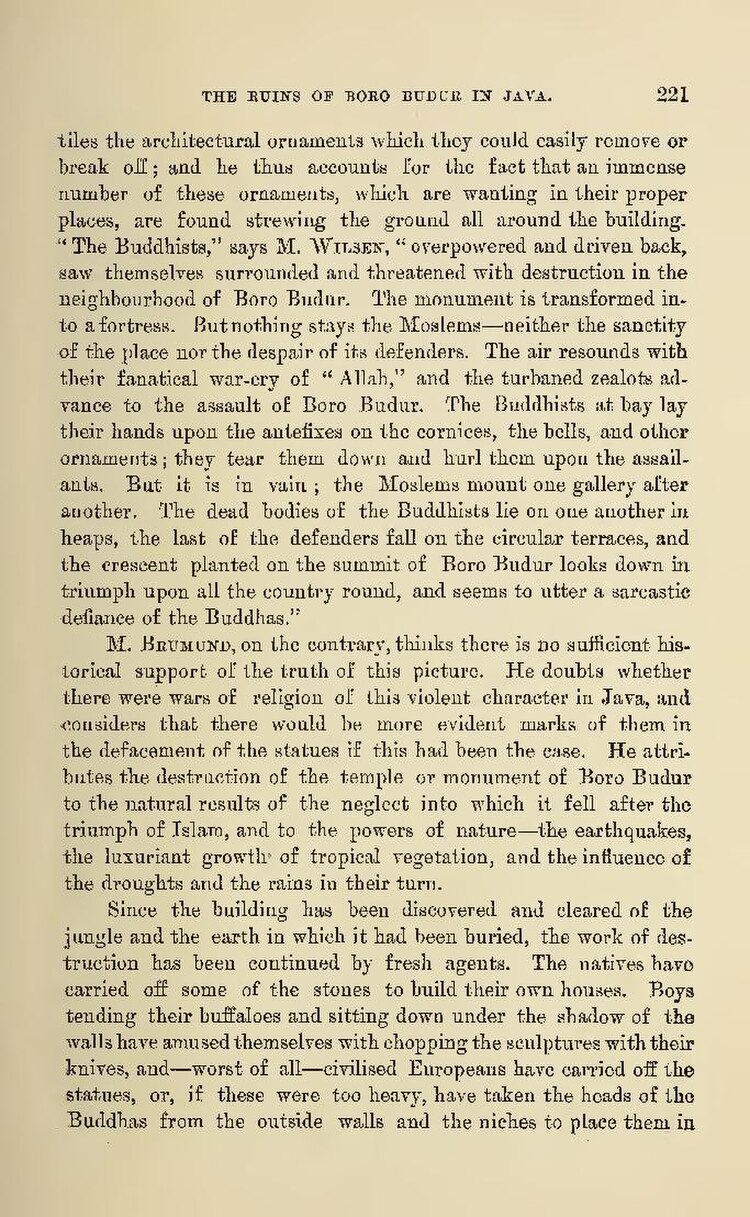tiles the architectural ornaments which they could easily remove or break off; and he thus accounts for the fact that an immense number of these ornaments, which are wanting in their proper places, are found strewing the ground all around the building. "The Buddhists," says M. WILSEN, "overpowered and driven back, saw themselves surrounded and threatened with destruction in the neighbourhood of Boro Budur. The monument is transformed into a fortress. But nothing stays the Moslems—neither the sanctity of the place nor the despair of its defenders. The air resounds with their fanatical war-cry of "Allah," and the turbaned zealots advance to the assault of Boro Budur. The Buddhists at bay lay their hands upon the antefixes on the cornices, the bells, and other ornaments; they tear them down and hurl them upon the assailants. But it is in vain; the Moslems mount one gallery after another. The dead bodies of the Buddhists lie on one another in heaps, the last of the defenders fall on the circular terraces, and the crescent planted on the summit of Boro Budur looks down in triumph upon all the country round, and seems to utter a sarcastic defiance of the Buddhas."
M. BRUMUND, on the contrary, thinks there is no sufficient historical support of the truth of this picture. He doubts whether there were wars of religion of this violent character in Java, and considers that there would be more evident marks of them in the defacement of the statues if this had been the case. He attributes the destruction of the temple or monument of Boro Budur to the natural results of the neglect into which it fell after the triumph of Islam, and to the powers of nature—the earthquakes, the luxuriant growth of tropical vegetation, and the influence of the droughts and the rains in their turn.
Since the building has been discovered and cleared of the jungle and the earth in which it had been buried, the work of destruction has been continued by fresh agents. The natives have carried off some of the stones to build their own houses. Boys tending their buffaloes and sitting down under the shadow of the walls have amused themselves with chopping the sculptures with their knives, and—worst of all—civilised Europeans have carried off the statues, or, if these were too heavy, have taken the heads of the Buddhas from the outside walls and the niches to place them in
